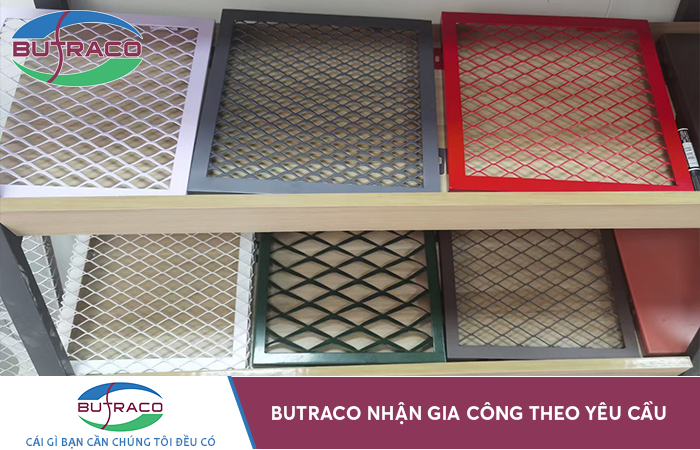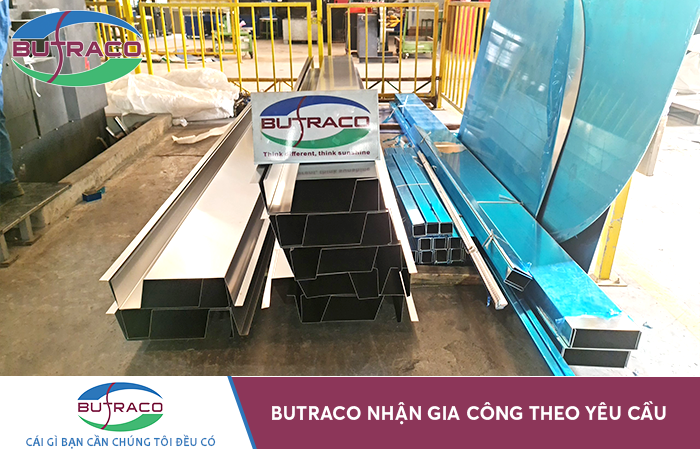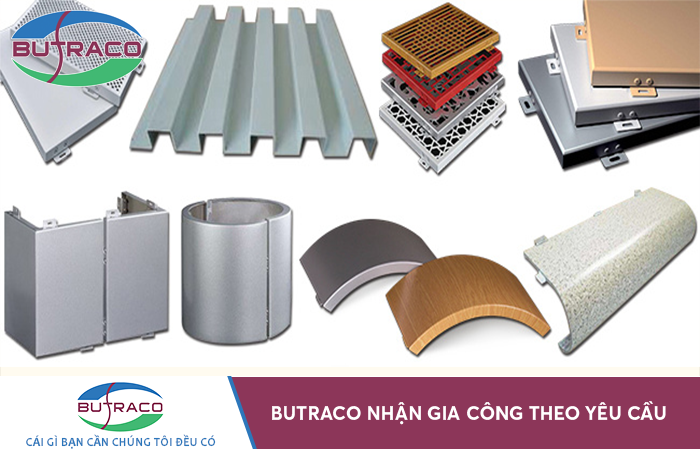Aluminum wall panels are now a very familiar material, widely used in the construction of residential buildings, offices, and high-rise structures. However, not everyone fully understands this material, especially in today’s competitive construction materials market. To provide you with more detailed information about aluminum wall panels, let’s explore the topic with Butraco!
Aluminum wall panels are solid aluminum sheets bent, folded, and shaped according to customer requirements for use as wall cladding. These panels are now very popular in the market and have become essential materials for both interior and exterior applications in construction and advertising.

Aluminum wall panels are typically designed with a thickness ranging from 1.5mm to 2mm. They are coated with electrostatic paint, and their colors can be customized according to the project’s design needs. These panels come in various forms, such as perforated panels or louvered panels.
Aluminum wall panels are suitable for various types of projects, including:
Simply building and applying cement with paint is no longer sufficient to enhance aesthetics and protect buildings from external factors. The market now offers a variety of protective solutions, such as paint, plastic aluminum composite panels (Alu), stone cladding, and aluminum panels. So, which one offers the best protection for your project?

Many types of paint have been developed to meet increasing aesthetic demands, including waterproof, anti-fading, and anti-mold paints. However, even the best paints tend to fade after 3-5 years. Despite advancements in moisture-resistant and mold-resistant paints, they are still not immune to the effects of time. If building owners wish to maintain the appearance of their property, they must repaint the surfaces periodically. Unfortunately, issues such as moisture and mold are not completely resolved by painting alone.
Outdoor stone cladding has become a familiar option, offering unique veining patterns and intricate designs suitable for elaborate, relaxing spaces. However, stone cladding can be challenging for large-scale projects due to the heaviness of the material, making transport and installation time-consuming. This can delay project completion, and replacing broken or damaged stones is also difficult and costly.
Alu composite panels consist of two thin layers of aluminum with a plastic core in between. These panels offer a variety of designs, such as stone and wood grain textures, making them attractive to a wide range of customers. However, processing these panels requires manual labor on-site, as they cannot be fabricated in a factory using machines. This makes transport difficult, and cut edges may be uneven. Creating shapes often involves milling, which can weaken the panel, and joints require silicone for sealing. Additionally, the lifespan is around 5 years, after which the panels may need to be replaced, resulting in high costs.
Butraco's solid aluminum panels – Solid Butraco address most of the shortcomings found in other materials. Therefore, they are an ideal choice for modern projects. Below are the key advantages of Butraco aluminum panels:
This article highlights the features and advantages of solid aluminum panels manufactured by Butraco. If you have any questions or would like a free consultation and design service for your project, feel free to contact or call Butraco directly for support.

If you are interested in mechanical processing products or want to find a reputable and quality manufacturer and distributor, Butraco is always happy to advise and provide all you need with the motto “What you need, we have it all”. With a team of experienced and enthusiastic employees, we have gradually affirmed our position as a leading company in the field of manufacturing and processing interior materials with corrugated iron, stainless steel, and mechanical processing products.
-------------------------------------------